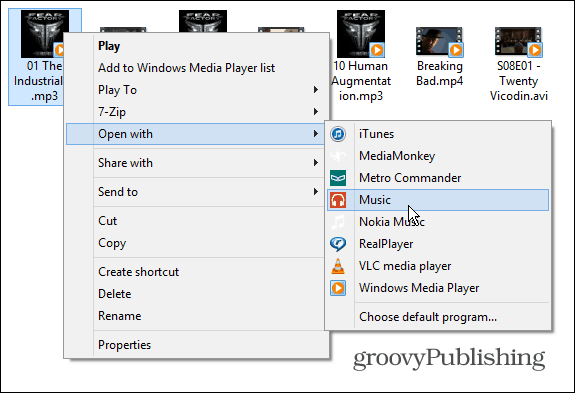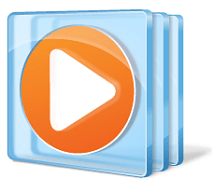How To Make Windows Media Player The Default
As you may already know, Windows Media Player 12 becomes an optional feature with recent updates to the final version of Windows 10 Fall Creators Update. The app gets removed automatically, so you might want to restore it back in the OS. In this article, we will see how it can be done.
- Aug 31, 2016 Change which programs Windows 7 uses by default. Content provided by Microsoft. Applies to: Windows 7. You can make the program a default by using Set Associations. You can also change which programs to use to start different kinds of media, such as music CDs.
- Windows See also: How to associate media files with VLC. The simplest way to set VLC as the default media player for Windows is during installation of VLC.During set-up, VLC will ask you if you want to associate certain media file types (such as.mp3,.flv,.wav) with VLC; for each 'association' chosen opening that file type will launch it in VLC.
Aug 7, 2018 - If you're a fan of WMP, you'll be happy to learn it's still in Windows 10. Here's how to find it and set it as your default app for your music.
RECOMMENDED: Click here to fix Windows errors and optimize system performance
Windows Media Player was bundled with Windows for a long time. Starting with Windows 98, every new version of Windows came with an improved version of the app. Windows Me was the first OS where Windows Media Player got a media library, skins and visualizations. The Windows XP era was when there were several updates to Windows Media Player, starting from version 8 to version 10. Windows Vista brought Windows Media Player 11, and Windows 7 brought version 12.Besides local playback of audio and video content stored on your drive, the player also features integration with the OS Libraries, metadata, ratings and album art management and can handle Internet streams with multicast. It can play media with fast forward, reverse, file markers (if present) and variable playback speed. WMP can also be used to sync content on devices which support Media Transfer Protocol, legally rip audio CDs, or burn a disc. It has a graphic equalizer, subtitle and caption support, plugins which support DSP effects, crossfading and auto volume leveling, auto-playlists and remote control features. Full keyboard-based operation is possible in the player. For video formats, WMP includes universal brightness, contrast, saturation and hue adjustments and pixel aspect ratio control. DVD playback was supported in Windows 7's version of WMP but removed later.
Windows 10 comes with Windows Media Player 12, but it has been improved upon in various ways. Support for FLAC audio, MKV container format and HEVC video was added. Support for the latest IDv3 tag standard for MP3s was also added. Also, the Play To feature was replaced by a greatly improved (Cast To feature) which can use either DLNA or Miracast to stream content to smart TVs and other devices and is more robust and compatible.
In recent Windows versions such as Windows 10, Windows Media Player is not the default app any more because it is not based on UWP. In Windows 10, Groove Music is the new default music player app and Movies & TV is set as the default video player app.
If you are extremely unhappy with Windows Media Player's removal, here is what you can do to restore it.
To restore Windows Media Player in Windows 10, do the following.
- Open the Settings app.
- Go to Apps > Apps & features.
- On the right, click on the link Manage optional features.
- Click on the button Add a feature at the top of the next page.
- Find the optional feature named Windows Media Player in the list under Add a feature.
- Click it. The install button will appear as shown below. Click on the Install button and you are done.
Tip: Using this method, you can also remove Windows Media Player from Windows 10. This will free up around 60 MB of space on the system drive - not much. In Settings > Apps > Apps & features > Manage optional features page, select Windows Media Player and click Uninstall to remove it from the OS.
There is an alternative method to add or remove Windows Media Player in Windows 10. It can be done with PowerShell. Here is how.
Restore Windows Media Player in Windows 10 using PowerShell
- Open an elevated PowerShell.
- To restore Windows Media Player, use the following command:
- To remove Windows Media Player, use the following command:
Change Default Media Player
That's it.
RECOMMENDED: Click here to fix Windows errors and optimize system performance
Related Articles
- 1 Make Spiceworks Use an IP Address Instead of DNS
- 2 Disable Updates in QuickBooks
- 3 Can I Turn Off 4G on iPhone 5?
- 4 Change the Monitor Resolution on a PC
Windows Media Player 12 not only includes a feature-rich player but also a multimedia organizer for collecting photo, audio and video files. The numerous settings enable you to fine-tune the player to suit your needs. However, excessive tweaking can slow down the player without an obvious way to change things back. However, Windows 8's troubleshooting utility enables you to reset the Windows Media Player settings back to their default states.
2.Press 'Win-X' to view the Windows 8 Utility pop-up, and then click 'Control Panel.'
3.
Click 'Find and Fix Problems' under the System and Settings section. Click 'Programs' followed by 'Windows Media Player Settings' from the Media Player section.
4.Click 'Next' to enable the troubleshooter to scan Windows Media Player. It should only take a few seconds for the scan to complete and present the next screen.
5.Click 'Apply This Fix' in the 'Reset Default Windows Media Player Settings' screen.
Warning
- Resetting the default Windows Media Player settings removes any configuration changes you've made.
References (1)
How To Make Windows Media Player The Default Dvd Player
Cite this ArticleChoose Citation Style
